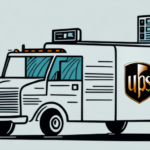Understanding the UPS Chargeback for Worldwide Standard Shipments
If your business relies on shipping products to customers, you're likely familiar with UPS (United Parcel Service). While UPS is renowned for its reliable and efficient service, one aspect that can be both frustrating and costly for businesses is UPS chargebacks. This article delves into what UPS chargebacks are, how they can affect your business, and offers actionable tips to help you avoid them.
How UPS Chargebacks Affect Your Business
UPS chargebacks can negatively impact your business in several significant ways:
- Financial Losses: UPS chargebacks mean you're being billed for additional fees you weren't prepared for. According to a 2023 industry report, small businesses can incur an average of $1,200 annually in chargeback fees.
- Customer Trust: Frequent chargebacks can lead to shipping delays and errors, resulting in dissatisfied customers who may choose competitors over your business.
- Relationship with UPS: Consistent chargebacks may strain your relationship with UPS, potentially leading to less favorable shipping terms or increased scrutiny of your shipping practices.
- Internal Efficiency: High chargeback rates may indicate underlying issues in your shipping processes or inventory management, necessitating a reevaluation to improve overall business efficiency.
What is a UPS Chargeback and Why Does it Happen?
A UPS chargeback occurs when a package you send is either weighed, measured, or labeled incorrectly, resulting in additional fees from UPS. Chargebacks may not be immediately notified and can be applied weeks or even months after shipment.
Common reasons for UPS chargebacks include:
- Incorrect or incomplete recipient addresses
- Missing or inaccurate package labels
- Incorrect dimensions or weights
- Improper packaging materials
- Damaged items due to inadequate packaging
To avoid UPS chargebacks, ensure that recipient information is accurate, use high-quality packaging materials, and properly label your packages with all necessary details, including the recipient's name, address, and any special handling instructions.
If you do receive a UPS chargeback, review the details carefully and take corrective actions such as updating shipping processes, improving packaging, or collaborating with UPS to resolve outstanding issues.
Different Types of UPS Chargebacks and Their Causes
UPS chargebacks can vary based on the nature of the error. Common types include:
- Address Correction Chargeback: Applied when an incorrect or incomplete recipient address is provided.
- Residential Delivery Chargeback: Occurs when a shipment is delivered to a residential address instead of a commercial one.
- Oversize Chargeback: Applies when a package's dimensions or weight exceed UPS's allowable limits.
- Additional Handling Chargeback: Charged when items require special handling, such as bulky or oddly shaped packages.
These chargebacks can significantly impact your business's bottom line by adding unexpected fees. To mitigate these costs, ensure all shipping information is precise, verify recipient addresses, select the appropriate shipping method, and properly package items to avoid additional handling charges.
Exploring the Worldwide Standard Shipment Process
UPS Worldwide Standard is a shipping service that allows businesses to send items globally with delivery times estimated between two to five business days. To optimize this service, businesses must comply with UPS guidelines to ensure a smooth shipment process. Key considerations include:
- Proper Packaging: Securely pack items to prevent damage during transit.
- Accurate Labeling: Ensure packages are correctly labeled with destination and return addresses, as well as proper tracking numbers.
- Customs Documentation: For international shipments, provide accurate customs documentation and comply with all relevant regulations and guidelines.
It's essential to evaluate whether UPS Worldwide Standard is the best option for your shipping needs. Depending on factors like package size, weight, and destination, other UPS services such as UPS Worldwide Express or UPS Worldwide Expedited might be more suitable.
Factors that Affect UPS Shipping Costs
UPS shipping costs are influenced by several factors:
- Distance: Longer distances result in higher shipping costs.
- Weight and Dimensions: Heavier and larger packages typically incur higher fees.
- Delivery Time Frames: Faster delivery options cost more than standard ones.
- Additional Services: Services like signature confirmation or insurance can increase costs.
- Item Type: Hazardous or fragile items may require special handling, adding to the cost.
- Destination: Shipping to remote or rural areas may be more expensive due to limited access to transportation hubs.
How to Avoid UPS Chargebacks on Your Shipments
Preventing UPS chargebacks involves adhering to UPS guidelines and ensuring your shipments are accurately prepared. Here are steps to avoid chargebacks:
- Double-Check Addresses: Verify that the recipient's address is accurate and complete, including zip codes and other necessary information.
- Proper Labeling: Clearly label packages with all required information, including tracking numbers and return addresses.
- Accurate Measurements: Weigh and measure packages precisely to stay within UPS's allowable limits.
- Proper Packaging: Use appropriate packaging materials to prevent damage during transit, such as cushioning and sturdy boxes.
- Select the Correct Shipping Service: Choose the appropriate UPS service based on your package's size, weight, and destination to avoid additional fees or delivery delays.
- Utilize UPS Tools: Leverage UPS's online tools and resources, like their shipping calculator and packaging guidelines, to ensure compliance with their standards.
Common Mistakes That Lead to UPS Chargebacks
Businesses often make several common errors when shipping with UPS, leading to chargebacks:
- Incorrect Addresses: Providing inaccurate or incomplete recipient addresses is a primary cause of chargebacks.
- Inaccurate Weight and Dimensions: Misreporting package weight or size can result in unexpected fees.
- Improper Packaging: Using inadequate cushioning or unsuitable boxes can cause damage during transit, leading to additional charges.
- Incorrect Labeling: Failing to include all required information on package labels can create confusion and result in chargebacks.
Navigating the UPS Dispute Resolution Process
If you receive a UPS chargeback that you believe is incorrect, you have the right to dispute it. UPS offers a dispute resolution process that allows businesses to contest chargebacks they deem erroneous. To initiate a dispute:
- Gather all relevant documentation, including shipping labels, invoices, and proof of correct packaging and labeling.
- Submit your dispute through the UPS website or by contacting UPS customer service.
- Provide evidence to support your claim, such as photos of the packaged items or correspondence with UPS representatives.
- Monitor the status of your dispute and follow up as necessary until the issue is resolved.
How to File a Claim for a UPS Chargeback
If a package is damaged or lost during transit, filing a claim with UPS is essential to seek reimbursement. Follow these steps to file a successful claim:
- Document the Damage: Take clear photos of the damaged item and its packaging.
- Gather Proof of Value: Provide receipts or invoices that show the item's value.
- Complete the Claim Form: Fill out the necessary claim forms available on the UPS website.
- Submit Promptly: File your claim as soon as possible, as delays can jeopardize your chances of reimbursement.
- Follow Up: Stay in contact with UPS to track the progress of your claim and provide any additional information if required.
Tips for Improving Your Shipping Strategy to Minimize Chargebacks
Enhancing your shipping strategy can significantly reduce UPS chargebacks and overall shipping costs. Consider the following tips:
- Invest in Shipping Software: Shipping software can automate many shipping tasks, ensuring compliance with UPS guidelines and minimizing errors.
- Partner with a Logistics Expert: Collaborating with a logistics partner can help you navigate complex shipping requirements, including customs regulations and international shipping laws.
- Consult a Packaging Specialist: A packaging expert can recommend the best materials and techniques to protect your items during transit, reducing the likelihood of damage and subsequent chargebacks.
- Regular Training: Train your staff regularly on best shipping practices and UPS guidelines to maintain high standards and reduce errors.
- Monitor Shipping Metrics: Track key shipping metrics to identify patterns or recurring issues that may lead to chargebacks, allowing you to address them proactively.
The Importance of Accurate Shipping Information in Reducing Chargebacks
Accurate shipping information is crucial to ensure your packages are delivered correctly and to avoid chargebacks. To maintain accuracy:
- Verify Recipient Details: Regularly update and confirm customer addresses and contact information.
- Use Reliable Address Verification Tools: Utilize tools that check and validate addresses before shipping.
- Provide Clear Instructions: Include any special delivery or handling instructions to ensure smooth delivery.
- Maintain Order Accuracy: Ensure that orders are fulfilled correctly, matching the shipping information provided by customers.
Implementing these practices not only reduces chargebacks but also enhances customer satisfaction by ensuring timely and accurate deliveries.
The Impact of Chargebacks on Your Bottom Line
UPS chargebacks can significantly affect your business's financial health. Even a single chargeback can accumulate unexpected fees, impacting your profit margins. According to recent studies, businesses may experience up to a 5% increase in shipping costs annually due to chargebacks.
To protect your bottom line:
- Implement Strict Shipping Protocols: Establish and enforce standardized shipping procedures to minimize errors.
- Regularly Audit Shipping Processes: Conduct audits to identify and rectify inefficiencies or recurring issues in your shipping operations.
- Leverage Technology: Utilize automated tools and software to streamline shipping tasks and reduce the likelihood of human error.
Understanding the Role of Technology in Reducing UPS Chargebacks
Technology plays a pivotal role in minimizing UPS chargebacks by streamlining and automating various aspects of the shipping process. Key technological solutions include:
- Shipping Software: Automates label creation, address verification, and shipping rate calculations to ensure compliance with UPS guidelines.
- Real-Time Tracking Systems: Provide live updates on shipment status, enabling businesses to address issues promptly before they escalate into chargebacks.
- Inventory Management Tools: Integrate with shipping systems to maintain accurate inventory levels, reducing the risk of shipping errors.
- Data Analytics: Analyze shipping data to identify trends, inefficiencies, and areas for improvement, facilitating proactive chargeback prevention.
By leveraging these technologies, businesses can enhance their shipping strategies, ensuring packages are delivered accurately and on time, thereby reducing the incidence of UPS chargebacks.
In conclusion, understanding the UPS chargeback system and implementing effective strategies to minimize them can lead to significant cost savings and improved customer satisfaction. By adopting best practices and leveraging technology, businesses can ensure their shipments are handled efficiently, maintaining a strong relationship with both UPS and their customers.




















